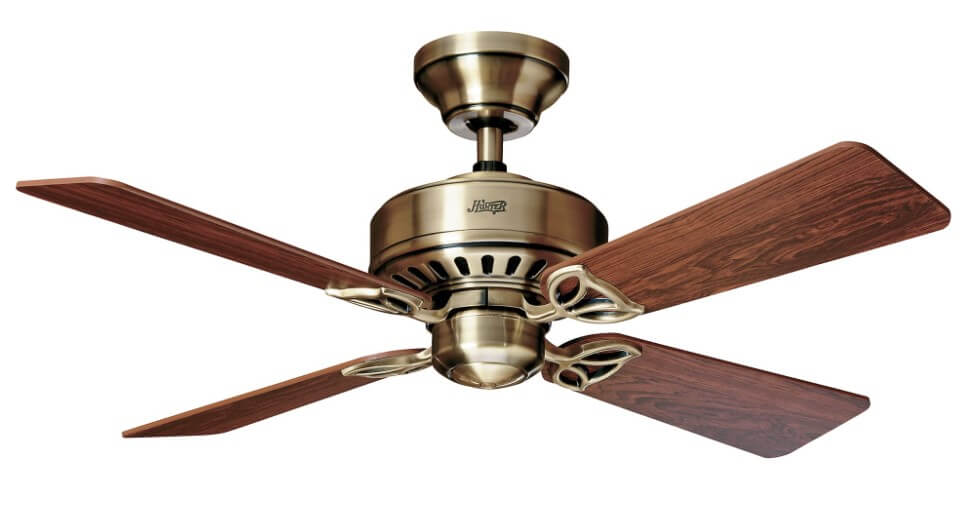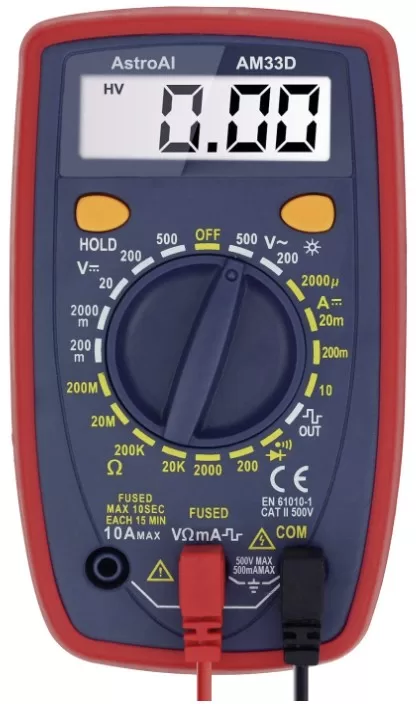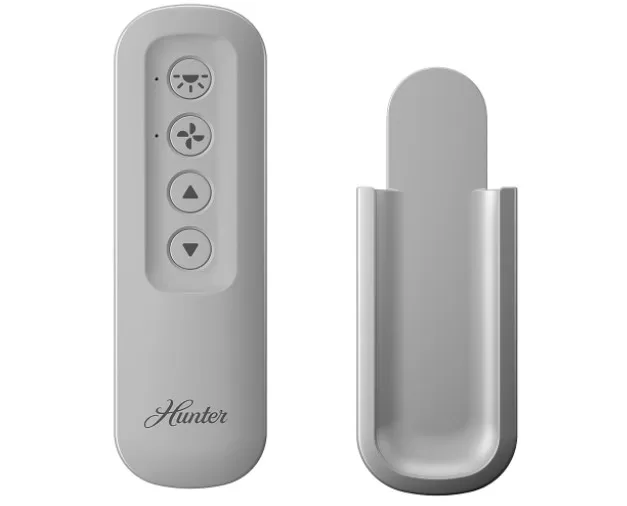If your Hunter ceiling fan is spinning slowly, you could be facing a mechanical or electrical issue. While it may not be easy to pinpoint the exact reason, there are a few things you need to watch out for.
In this article, we’ll go through the main causes behind a Hunter ceiling fan that runs slow and ways to troubleshoot it.

Contents
Reasons why your Hunter ceiling fan runs slow
As we’ve explained earlier, the main issues are mostly mechanical or electrical problems.
Some of them are easy to fix as a DIY. However, other instances require assistance from an expert or special tools.
1. Poor capacitor
The role of the ceiling fan’s capacitor is to provide power to the motor based on its setting. Poor capacitors cause most ceiling fan problems.
When the Hunter ceiling fan’s damaged capacitor stops working and cannot transform power to the motor, it causes the fan to run slower than its usual speed.
2. Loose screws
Another reason for a ceiling fan running at a slow speed is loose screws. We normally identify this as the issue, especially where homeowners installed the fan by themselves.
One way to tell if the fan has loose screws is to switch it on and then listen for rattling sounds from the blades.
NOTE: Loose screws are a serious safety hazard that can injure someone when the fan starts running. Always ensure screws are tightly fastened when installing a fan.
3. Loss of lubrication
The fan’s motor is often lubricated for it to work seamlessly. Without lubrication, the moving parts inside the motor will dry out due to friction.

This means the fan will operate slower than usual even when its speed settings are adjusted. In other instances, it may stop functioning immediately.
Running a fan without lubrication for extended periods may also lead to oil leakage. As the moving parts rotate, they tend to cause overheating, damage, or breakages.
You can determine this by checking for oil leakage or friction on the fan’s motor.
4. Loose or imbalanced blades
Hunter ceiling fan blades may start making noise when used for a long time. The noise may come from one, two, or even all three of the blades.
From our experience, the noise usually indicates an imbalance in the ceiling fan blades. It is also one of the reasons why your Hunter ceiling fan is running slow.
If you notice a bent or damaged area on any blade, balance the fan immediately before it affects its functionality. It may also be a safety hazard for the room’s occupants.
5. Bearings problems
When ceiling fans are running slowly and humming for an extended period, they accumulate dirt, dust, and debris in the ball bearings.
This causes the fan to run slower since the ball bearings experience a problem moving.
You can determine this problem by checking any signs of dirt or oil residue on the ball bearings and motor. You can also listen for any breaking or unusual sound as it gains speed.
6. Low voltage
The fan may receive minimal voltage from the power source, causing it to run slowly at the highest setting.
Slow-moving ceiling fans operate on low voltage, so you should measure the fan’s voltage at the motor to determine its input voltage.

Troubleshooting Hunter ceiling fan speed problems
Ceiling fans look like simple appliances, but they’re sensitive to any changes around them and act unusual when exposed to them.
Here are some troubleshooting tips to save you time and money:
1. Lubricate the fan’s motor
Follow these steps to lubricate a fan with friction problems:
- Turn off the fan from the switch and try rotating the blades with your hands. Lubricate the fan if you hear a squeaky sound or the blades face difficulty turning.
- Stand on a ladder and look for a small hole on the upper side of the motor labeled “Add oil.”
- Place plastic sheeting under the fan to prevent spillage on the carpet and furniture.
- Initially, spray light oil (SAE 15 or SAE 10 oil) into the hole and turn on the fan to run for 20 minutes.
- Turn off the fan and add more ceiling fan oil until its reservoir overflows slightly.
- Wipe the fan off any oil drippings using a paper towel.
- Turn on the fan to see if there are any changes.
Sometimes, you’ll have to let it run for about a minute to notice a difference.
2. Check on the voltage supply and capacitor
Follow these steps to diagnose low voltage:
- Turn off the fan from the switch and remove its lower part to expose the hub.
- Measure the fan’s motor’s voltage using a voltmeter and check whether it receives more than 120V.
- If its voltage is between 100 and 220V, check whether there are wiring or capacitor problems when taking down the fan.
- Replace the capacitor if it is damaged. You may also ask for assistance to replace the capacitor where needed.
- Reattach everything and turn on the fan to check whether it runs smoothly.
- If it has a wiring problem, contact a professional electrician to fix the wires.
3. Buy a new remote control
In some cases, the fan’s remote control may be at fault, or the fan may receive stray frequencies from the neighborhood.
Changing frequencies from a faulty remote control may also reduce the fan’s speed.
If so, buy a new remote control and check whether the problem is solved. There are many replacement remotes available. Go for one that is designed for your specific fan.

4. Fix the fan’s balance
Here are tips on how to check the fan’s imbalance and how you can solve it:
- Turn off the fan from the switch or use a remote control.
- Measure the distance of each blade from the tip to the ceiling fan attachment. They should be of equal distance if the ceiling is leveled.
- If there is more than a quarter distance between the blade tip and the ceiling, fix the problem using a special weight or tightening the screws at the base.
- Wipe the blades using a dry cloth or paper towel from top to bottom to remove accumulated dirt and dust.
- Add special weight by taping a standard metal washer or coin at the top of each blade until all the blades are leveled with each other and the ceiling.
Get more help
If you have tried all the above steps and the Hunter ceiling fan runs slow, we recommend you contact the Hunter Fan Company customer support.
You can also contact a certified technician for assistance.
Resources
